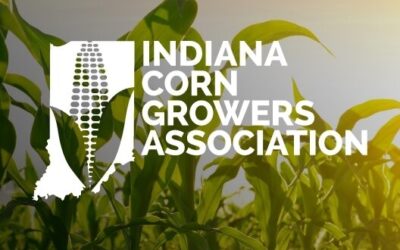Soybean oil demand will expand as renewable diesel emerges as ideal biofuel
“It’s clear that sustainability is a bigger and bigger business driver around the world,” said Jim Sutter, CEO of the U.S. Soybean Export Council (USSEC), during a December webinar focused on the outlook for U.S. Soy production, crush and exports. U.S. Soy is poised to deliver a sustainable solution, he added.
“Earlier this year, SSAP (U.S. Soy Sustainability Assurance Protocol) was recognized for meeting the Olympic and Paralympic Games Tokyo 2020 Organizing Committee’s sustainable sourcing code for agricultural products, the Global Seafood Alliance’s Best Aquaculture Practices and the Consumer Goods Forum’s Sustainable Soy Sourcing Guidelines,” Sutter said. “And we are very pleased that the SSAP was again recognized and approved by FEFAC as being compliant with their 2021 Soy Sourcing Guidelines.
“This can give strong assurance to customers around the world about the background, practices and sustainability U.S. Soy is produced with.”

As businesses, states and countries adopt sustainable policies and commit to building a better environment, experts say demand for soy is expected to erupt.
In the United States, both renewable diesel and biodiesel draw on the same feedstocks. Mac Marshall, Vice President of Market Intelligence for USSEC and the United Soybean Board, explained that the market is comprised of soybean oil, distillers corn oil, animal fats, canola oil and used cooking oil/yellow grease, of which soybean oil makes up nearly 50 percent of the feedstock share.
“Renewable biodiesel is poised to be a much larger market in the years to come,” said Marshall, noting it’s a 3-billion-gallon market of which greenfield construction can bring up in the next couple of years.
Marshall echoed Sutter in that what makes this exciting and tangible are the uncommon partnerships being announced: Loves and Cargill, Marathon Petroleum and ADM, and Philipps 66 and Shell Rock Soy Processing, and Chevron and Bunge. For some, these partnerships leave more questions than answers.
What does this mean for the availability of U.S. Soy and U.S. Soy exports? Marshall said, even when they’re all combined, it’s only about a 20 percent demand increase for all oil feedstocks relative to existing capacity.
“We will still have ample amounts of whole soybeans that will be available for international markets,” said Marshall, adding that U.S. soybean farmers in 2021 wrapped up what analysts believe is the second largest crop.
But shaping this demand is policy.
Demand drivers
Nationally, the Renewable Fuel Standard (RFS), which is benchmark legislation created by Congress in 2005, guides national policy. Alexa Combelic, American Soybean Association Director of Government Affairs, said the RFS sets the stage for the U.S. Environmental Protection Agency (EPA) to annually develop new renewable fuel obligations to guide the market. She noted that these renewable volume obligations have been delayed for the past three years. However, Combelic is optimistic about the numbers for the year ahead.
Looking at state policy, several states have carbon goals that drive sustainable policy. Combelic spotlights California, which kicked this off this process in 2009 as the first state to implement a low-carbon fuel standard. She says this was followed in 2016 by Oregon and in 2022, Washington should have its low-carbon rule-making complete.
LMC International’s James Fry said these states’ policies have moved from their reliance on the mandates provided by the Renewable Fuel Standard to statutory requirements to reduce the carbon intensity of its fuels.
In the northeast part of the country, Combelic said home heating oil blending requirements will start in 2035 and increase from there with B30 blending requirements. She said these states include nearly 40 percent of homes using home heating oil, which equates to about 4 billion gallons per year.
Fry, the company’s chairman and founder, noted that both Fatty Acid Methyl Esters (FAME) and fuel ethanol have faced limits in the proportions in which they can be blended with diesel and gasoline.
“These blend walls mean that higher biofuel demand has to be met increasingly with renewable diesel, the one biofuel that has no limit on the proportions in which it can be blended,” he said, adding that California has the highest reliance on renewable diesel where biodiesel blend rates already exceed 20 percent.
Lurking in the future is sustainable aviation fuel. While this is still new, Fry reported that some analysts believe it will be larger than FAME plus renewable diesel 10 years from now but may use ethanol as an input (not oils and fats).
World demands more soybean oil
Fry said the world needs more soybean oil, but “it has nothing to do with soy and everything to do with palm.” He explained that Indonesia and Malaysia produce more palm oil than the rest of the world, and they are by far the largest exporters of vegetable oil. However, Fry said this has been declining in recent years. Oil palm is incredibly labor intensive, and it’s incredibly hard to mechanize the harvesting of the trees. Also, environmental constraints limit expansion.
The world cannot look to oil palm to meet its growth in oil demand, Fry said.
When all oil crops are combined, Fry estimated an average of nearly 2 percent growth per year through 2030. However, he said that soybean – the oilseed with the greatest scope for expansion – will expand its oil supply at a rate of nearly 3.5 percent annually, while canola and sunflower will grow closer to 1.5 percent annually.
Fry pointed out that this will pull soybean oil above palm oil in its share of total global output of the four main vegetable oils after 2025.
Looking to the future, Fry believes there will be seasonal pressure on the availability of soy oil from U.S. crushers. “Soy oil is really the ideal oil for meeting the mandates of California and the RFS,” he said.
To meet this demand, Fry expects U.S. soybean farmers to expand soybean production by 7 million to 8 million acres, pushing total acres to 94 million to 95 million by 2030-31. This expansion, he said, will likely take acres away from corn, wheat and cotton. He also expects seed companies to develop soybean varieties with higher yields and higher oil content.
Accompanying the production of more soybeans will be an increase in U.S. crush, with much of the investment in new capacity already in the pipeline with renewable diesel. What does this mean for U.S. Soy exports? Fry forecasts that for the next five years, the growth in U.S. production will roughly match the growth in crush. It’s not until after 2027, when the growth of sustainable aviation fuel becomes crucial, that export surplus beans could be absorbed domestically by a demand explosion, he said.
One thing is for certain, Fry explained, the surge in U.S. crush will lead to more soybean meal production. Some of which will be used to feed livestock, leading to higher meat exports, and some will go for novel vegetarian and vegan foods. However, he says, most of it will be exported.
For additional details and the full webinar, go online to https://ussec.org/u-s-soys-outlook-production-crushexports/
Posted: March 25, 2022
Category: Indiana Corn and Soybean Post - Winter 2022, ISA, News




